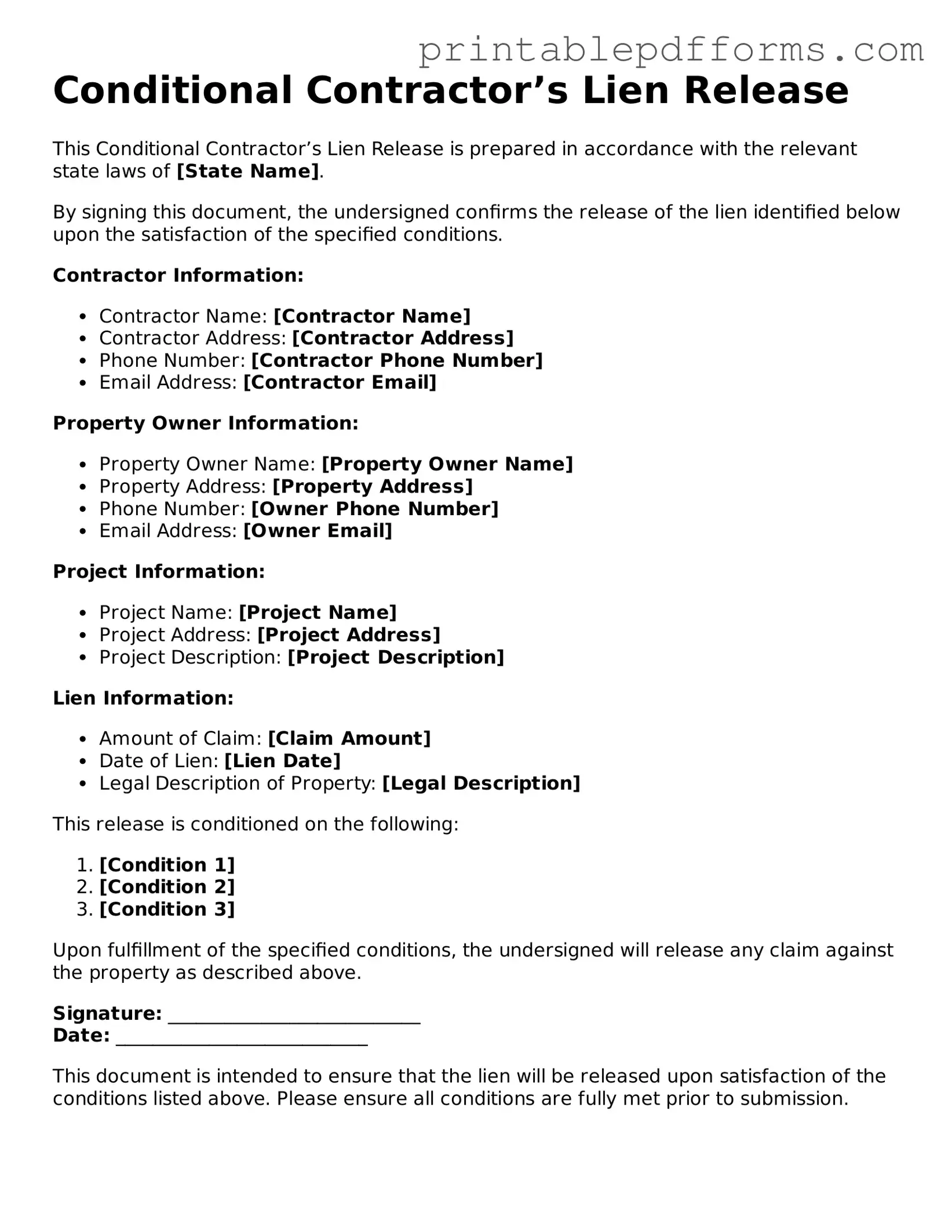Conditional Contractor’s Lien Release
This Conditional Contractor’s Lien Release is prepared in accordance with the relevant state laws of [State Name].
By signing this document, the undersigned confirms the release of the lien identified below upon the satisfaction of the specified conditions.
Contractor Information:
- Contractor Name: [Contractor Name]
- Contractor Address: [Contractor Address]
- Phone Number: [Contractor Phone Number]
- Email Address: [Contractor Email]
Property Owner Information:
- Property Owner Name: [Property Owner Name]
- Property Address: [Property Address]
- Phone Number: [Owner Phone Number]
- Email Address: [Owner Email]
Project Information:
- Project Name: [Project Name]
- Project Address: [Project Address]
- Project Description: [Project Description]
Lien Information:
- Amount of Claim: [Claim Amount]
- Date of Lien: [Lien Date]
- Legal Description of Property: [Legal Description]
This release is conditioned on the following:
- [Condition 1]
- [Condition 2]
- [Condition 3]
Upon fulfillment of the specified conditions, the undersigned will release any claim against the property as described above.
Signature: ___________________________
Date: ___________________________
This document is intended to ensure that the lien will be released upon satisfaction of the conditions listed above. Please ensure all conditions are fully met prior to submission.
